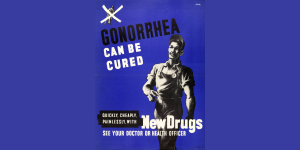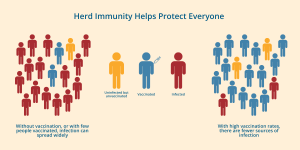
There Are Two New Drugs to Treat Gonorrhea
The FDA approved two new drugs to treat gonorrhea The new drugs—gepotidacin and zoliflodacin—are both new kinds of antibiotics and represent the first completely new treatment options in over thirty years.

When it comes to getting tested for sexually transmitted infections (STIs), there are some basic guidelines that apply to everyone who is sexually active regardless of sex, gender, or sexual partners. The most obvious piece of advice is to get tested right away if you have any symptoms like itching, burning, sores, or discharge. Of course, a lot of STIs have no symptoms, so it’s also a good idea to get tested when you have a new sexual partner or if you have multiple sexual partners.
There are other more specific screening recommendations for certain populations. For example, the CDC recommends that sexually active women under 25 get tested for chlamydia annually. There are also specific recommendations for gay, bisexual, and other men who have sex with men and for transgender and gender diverse persons. Missing from this list—heterosexual men. Instead, the CDC recommends “risk-based” screening for this population.
Screening recommendations are about setting priorities and making the biggest impact with the available resources. With limited funding, emphasis is on groups where infection is common and harm is greater. Young women, for example, are more susceptible to chlamydia infection, and the potential long-term consequences include infertility. Because infection is less common and the health impact less severe, widespread screening for STIs in hetero men is deemed “not cost effective.”
At the recent national STI Prevention Conference, Dr. Ina Park—author, sexual health MD, and UCSF professor—argued that we should be thinking differently about screening for hetero men. For one thing, heterosexual men are the ones passing STIs to heterosexual women. We can’t successfully address the rising rates of STIs—especially syphilis—in hetero women without getting men involved.
She also pointed to data that suggests risk-based screening of hetero men is not working in part because too few providers take a sexual health history. Without this information, they can’t accurately assess risk.
Dr. Park noted that men of color are disproportionately affected by STIs and could stand to gain the most if we are successful in STI control efforts among men. “Excluding hetero men from messaging around STI testing,” she concluded, “sends a message ‘your sexual health is not a priority.’”
Ahead of her presentation, Dr. Park took her case to social media with her characteristic humor and a survey.
The response has been near universal—99 percent of those responding agree that providers should recommend STI testing for sexually active heterosexual men.
Do you agree?

The FDA approved two new drugs to treat gonorrhea The new drugs—gepotidacin and zoliflodacin—are both new kinds of antibiotics and represent the first completely new treatment options in over thirty years.

The American Cancer Society (ACS) released new recommendations for cervical cancer screening that focus on HPV testing and approve the use of self-collected samples. The recommendations also clarify the age at which screening should start and stop.

Public health officials in England announced that they have identified a new combined type of mpox. Tests show the virus was a unique mix of the two known types of mpox and experts are concerned about what this means for future spread of the virus.

A committee that advises the Centers for Disease Control and Prevention (CDC) made an alarming change to the recommendations for the hepatitis B vaccine that will leave some infants unprotected.

The Centers for Disease Control and Prevention (CDC) recently made striking changes to its online information about the connection between vaccines and autism that put the agency on the wrong side of science.

A new report from the World Health Organization (WHO) warns of rising levels of drug-resistant gonorrhea. The data comes from reported cases of gonorrhea in 12 countries across five WHO regions.

We’ve known for years that the HPV vaccine works. Now new research shows that widespread vaccination even protects those who haven’t gotten the shot. This study proves that it is possible to reach herd immunity for HPV.

A more serious type of mpox may be spreading California. Three people in the state were hospitalized with the virus.
ASHA believes that all people have the right to the information and services that will help them to have optimum sexual health. We envision a time when stigma is no longer associated with sexual health and our nation is united in its belief that sexuality is a normal, healthy, and positive aspect of human life.
ABOUT
GET INVOLVED
ASHA WEBSITES
GET HELP
© 2025 American Sexual Health Association